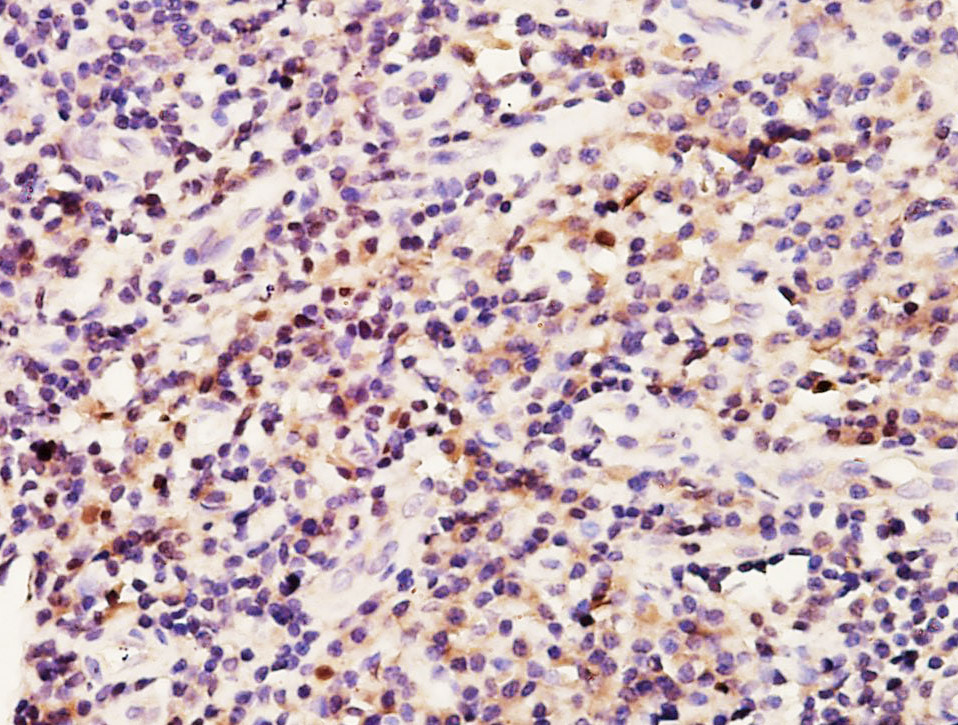BRCA1 antibody [6B4] - ChIP grade
GTX70115
ApplicationsImmunoFluorescence, ImmunoPrecipitation, Western Blot, ChIP Chromatin ImmunoPrecipitation, ImmunoCytoChemistry, ImmunoHistoChemistry, ImmunoHistoChemistry Paraffin
Product group Antibodies
ReactivityHuman
TargetBRCA1
Overview
- SupplierGeneTex
- Product NameBRCA1 antibody [6B4] - ChIP grade
- Delivery Days Customer9
- Application Supplier NoteWB: 1:500-1:3000. ICC/IF: 1:100-1:1000. *Optimal dilutions/concentrations should be determined by the researcher.Not tested in other applications.
- ApplicationsImmunoFluorescence, ImmunoPrecipitation, Western Blot, ChIP Chromatin ImmunoPrecipitation, ImmunoCytoChemistry, ImmunoHistoChemistry, ImmunoHistoChemistry Paraffin
- CertificationResearch Use Only
- ClonalityMonoclonal
- Clone ID6b4
- Concentration1 mg/ml
- ConjugateUnconjugated
- Gene ID672
- Target nameBRCA1
- Target descriptionBRCA1 DNA repair associated
- Target synonymsBRCAI, BRCC1, BROVCA1, FANCS, IRIS, PNCA4, PPP1R53, PSCP, RNF53, breast cancer type 1 susceptibility protein, BRCA1/BRCA2-containing complex, subunit 1, Fanconi anemia, complementation group S, RING finger protein 53, breast and ovarian cancer susceptibility protein 1, breast cancer 1, early onset, early onset breast cancer 1, protein phosphatase 1, regulatory subunit 53
- HostMouse
- IsotypeIgG1
- Protein IDP38398
- Protein NameBreast cancer type 1 susceptibility protein
- Scientific DescriptionThis gene encodes a nuclear phosphoprotein that plays a role in maintaining genomic stability, and it also acts as a tumor suppressor. The encoded protein combines with other tumor suppressors, DNA damage sensors, and signal transducers to form a large multi-subunit protein complex known as the BRCA1-associated genome surveillance complex (BASC). This gene product associates with RNA polymerase II, and through the C-terminal domain, also interacts with histone deacetylase complexes. This protein thus plays a role in transcription, DNA repair of double-stranded breaks, and recombination. Mutations in this gene are responsible for approximately 40% of inherited breast cancers and more than 80% of inherited breast and ovarian cancers. Alternative splicing plays a role in modulating the subcellular localization and physiological function of this gene. Many alternatively spliced transcript variants, some of which are disease-associated mutations, have been described for this gene, but the full-length natures of only some of these variants has been described. A related pseudogene, which is also located on chromosome 17, has been identified. [provided by RefSeq, May 2009]
- ReactivityHuman
- Storage Instruction-20°C or -80°C,2°C to 8°C
- UNSPSC12352203
References
- Lajud SA, Nagda DA, Yamashita T, et al. Dual disruption of DNA repair and telomere maintenance for the treatment of head and neck cancer. Clin Cancer Res. 2014,20(24):6465-78. doi: 10.1158/1078-0432.CCR-14-0176Read this paper
- Bernard-Gallon DJ, Dechelotte PJ, Le Corre L, et al. Differential expressions of BRCA1 and BRCA2 in infantile gynecomastia. Anticancer Res. 2004,24(1):321-4.Read this paper
- Li S, Ting NS, Zheng L, et al. Functional link of BRCA1 and ataxia telangiectasia gene product in DNA damage response. Nature. 2000,406(6792):210-5.Read this paper


